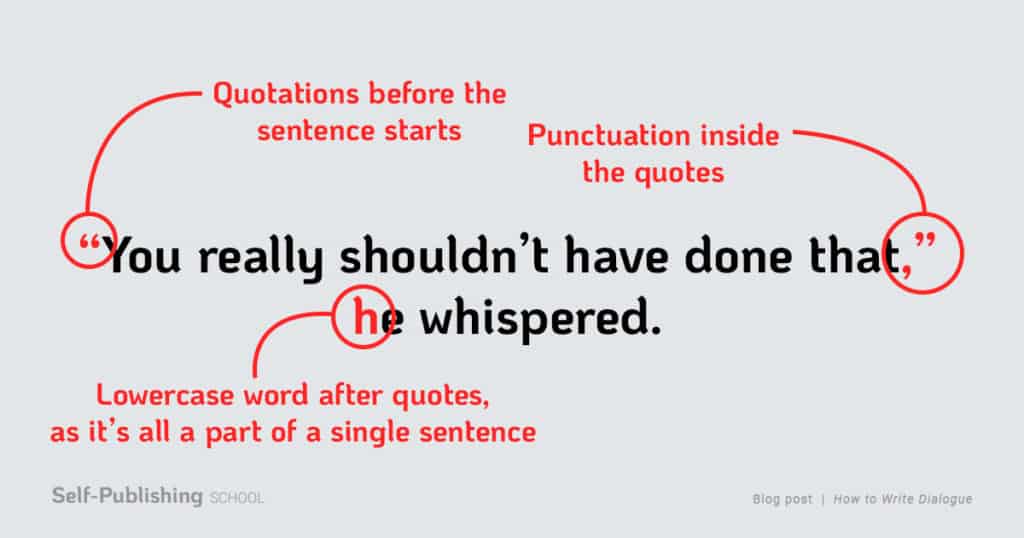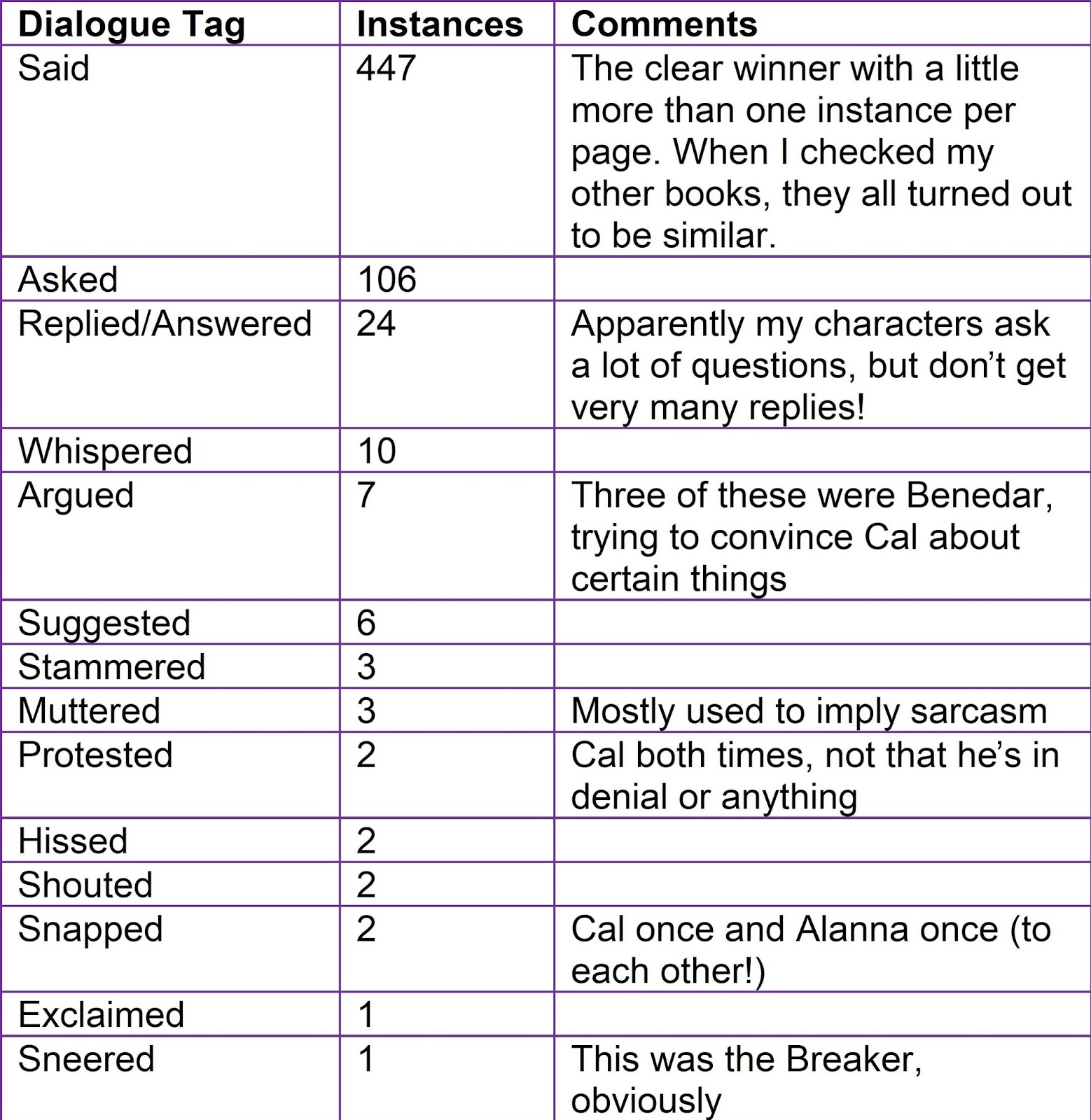
In such a situation, you only include close quotation marks at the end of the last paragraph.

If you have long written dialogue, you may split it into multiple paragraphs. Remove quotations for multiple paragraphs
DIALOGUE TAGS RULES HOW TO
Related: How To Become a Creative Writer in 9 Steps 5. For example, if you're asking a question about a quote, the question mark goes at the end of the sentence rather than with the words in quotations.Įxample: Which Shakespeare play contains the words, “Now is the winter of our discontent”? Exceptions largely depend on how you're using quotation marks within the sentence. Incorrect usage: Mary replied, “Thank you for coming.”Ĭorrect usage: Mary asked, “How can I help you today?” This includes punctuation characters such as question marks, exclamation points or commas. In most situations, any punctuation goes inside the closing quotation marks, rather than after them. Related: 12 Tips for Starting a Career as an Author 4. Thank you for asking,” John said.Ĭorrect usage: “How are you?” John asked. Incorrect usage: “How are you?” John asked. Separating each speaker onto a new line makes the written dialogue easier to read and follow.

This rule applies to any situation where a different person speaks, not just when a new person enters a conversation. Separate new speakersĮach time you introduce a new speaker into dialogue, place their quote on a separate line. There are many dialogue tags you can use, such as: Instead of only using the same tag repeatedly, use numerous tags to provide more context to the scene. When using dialogue tags, try to use a variety of different tags. Related: 13 Creative Writing Courses To Pursue To Improve as a Writer 2. “So did I!” interjected the other interviewer, Mary. “I lived in France for two years during college.”

While you don't need to use a dialogue tag each time a new person speaks, it's helpful to include them whenever there's a change of tone or a break in an established pattern.Įxample: “Do you have any special skills?” the interviewer, John, asked. Use dialogue tags to differentiate who's speaking at different points in the dialogue. Common examples of dialogue tags include: Use dialogue tagsĪ dialogue tag is the part of a sentence that indicates who's speaking. Related: Creative Writing Degree Skills: Definition and Examples 12 rules of dialogueīelow are some rules you can use to help you improve your ability to write dialogue: 1. Some of these rules relate to the proper way to punctuate a sentence, while others relate to creating a more enjoyable dialogue for readers.īy using these rules when writing dialogue, you can make your stories easier for readers to follow and perhaps even craft more interesting characters. What are dialogue rules?ĭialogue rules are guidelines and tips writers can use to craft engaging sentences in which subjects or characters speak. In this article, we discuss what dialogue rules are, explore 12 different rules and best practices for writing dialogue and provide examples that can help you craft your own. Knowing more about these dialogue conventions and strategies may improve your writing abilities, along with the quality of your prose.

If you write short stories or novels, you likely include dialogue in your fictional works. There's an array of formatting conventions and best practices that writers can use to make their writing both easier for readers to understand and more engaging.


 0 kommentar(er)
0 kommentar(er)
